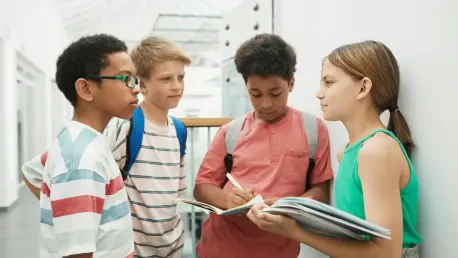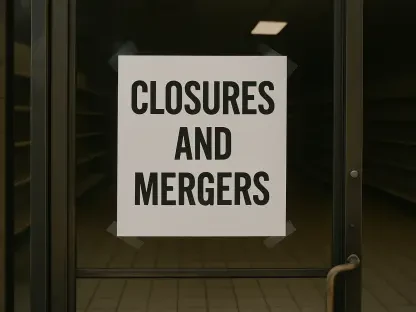Imagine a classroom where a first-grader eagerly helps a kindergarten student with a tricky math problem, while a second-grader gains confidence by leading a group project, creating a dynamic often found in mixed-age classrooms that challenges the traditional notion of separating students strictly by age. In primary schools, particularly in smaller or rural settings, combining year groups like first and second graders into a single learning environment is becoming a practical and strategic choice. Far from being a mere logistical solution, this approach offers unique advantages that can enrich a child’s educational journey. Research and real-world examples suggest that such settings not only maintain academic standards but also foster social and emotional growth in ways single-age classrooms may not. This exploration delves into how these diverse learning spaces can positively shape young learners, highlighting the multifaceted impacts on their development and school experience.
Understanding the Rationale Behind Mixed-Age Settings
In many educational systems, especially in rural or smaller schools, combining students from different year groups into one classroom often stems from necessity due to limited enrollment numbers. This setup allows schools to maximize resources, ensuring that every child receives adequate attention and instruction despite constraints. Beyond practicality, some institutions deliberately adopt this model to create a more tailored learning environment. By grouping students of varying ages, educators can leverage the diverse skill levels within the class, pairing stronger learners with those needing support. This strategy also enables teachers to specialize in certain subjects, drawing on their expertise to benefit a broader range of students, while teaching assistants can provide targeted help. The result is a classroom that mirrors a microcosm of society, where differences in ability and maturity are not barriers but opportunities for mutual growth and learning.
Equally important is the intentional design behind mixed-age classrooms as a pedagogical choice rather than a fallback option. Schools adopting this approach often aim to break away from rigid age-based structures, recognizing that children develop at different paces and can benefit from exposure to peers at various stages. This environment encourages older students to take on leadership roles, reinforcing their own understanding by teaching concepts to younger classmates. Meanwhile, younger learners gain from observing and interacting with more experienced peers, often accelerating their own progress. Such arrangements also optimize classroom dynamics by reducing competitive pressures that can dominate single-age settings, fostering instead a collaborative spirit. Evidence from educational studies supports that when managed effectively, these classrooms can cater to individual needs more holistically, ensuring that no student is left behind while allowing others to advance at their own speed.
Academic Outcomes in Diverse Age Groups
Contrary to concerns that mixed-age classrooms might dilute academic rigor, research consistently shows that student performance in these settings holds up well against national standards seen in traditional single-age environments. Studies, particularly those conducted in smaller school districts where such arrangements are common, reveal no significant detriment to learning outcomes. In fact, data suggests that students in these classrooms often achieve comparable results in core subjects like reading and mathematics. This indicates that the presence of multiple age groups does not inherently disrupt the educational process. Instead, with thoughtful planning, teachers can adapt curricula to address varying skill levels, ensuring that each child progresses appropriately. The absence of empirical evidence pointing to negative academic impacts reassures educators and parents alike that this model can be a viable alternative.
Moreover, there are subtle yet noteworthy academic advantages to mixed-age settings that extend beyond test scores and grades. Students often exhibit improved attitudes toward learning, displaying greater enthusiasm for school compared to peers in conventional classrooms. This positive outlook is complemented by an enhanced sense of self-concept, as children gain confidence from both mastering new skills and helping others. For instance, when an older student explains a concept to a younger peer, the act of teaching reinforces their own knowledge while building self-esteem. Younger learners, in turn, benefit from accessible role models who demystify challenging topics. These interactions create a supportive learning culture where academic growth is intertwined with personal development, suggesting that mixed-age classrooms can nurture a more rounded educational experience that prioritizes both achievement and attitude.
Social and Emotional Growth Through Age Diversity
One of the standout strengths of mixed-age classrooms lies in their ability to mirror the natural interactions children encounter outside school, such as in family settings or community activities. In everyday life, young people regularly engage with individuals of different ages, whether playing with siblings, learning from grandparents, or collaborating in extracurricular programs. Traditional single-age classrooms, however, often isolate students within narrow peer groups, limiting exposure to diverse perspectives. By contrast, mixed-age settings cultivate an environment where older children mentor younger ones, fostering patience and empathy, while younger students learn to seek guidance and adapt. This dynamic not only builds essential communication skills but also prepares children for future scenarios, such as transitioning to high school or entering the workforce, where age diversity is the norm.
Beyond preparing for real-world interactions, mixed-age classrooms also create a profound sense of community and belonging that can significantly impact emotional well-being. Cross-year friendships emerge naturally as students work together on projects or share daily routines, breaking down barriers that age segregation might impose. Older students often take pride in guiding their younger counterparts, developing leadership qualities and a sense of responsibility. Meanwhile, younger children gain confidence by contributing to group efforts and receiving encouragement from peers they look up to. This reciprocal relationship nurtures a classroom culture rooted in collaboration rather than competition, reducing instances of bullying and exclusion. As a result, students develop a stronger emotional foundation, feeling valued within a supportive network that celebrates individual differences while emphasizing collective growth.
Building Strong School-Parent Partnerships
Navigating the start of a new school year can bring a mix of excitement and anxiety for families, and the concept of a mixed-age classroom might initially heighten these feelings due to unfamiliarity with the model. Parents may worry about whether their child will receive adequate attention or keep pace with peers in a diverse setting. However, schools that implement this approach often prioritize transparency to address such concerns, clearly communicating their strategies for supporting each student’s development. By providing detailed insights into how lessons are adapted and how social interactions are encouraged, educators can alleviate apprehensions. This open dialogue ensures that families understand the potential advantages of the setup, fostering trust in the school’s commitment to creating a nurturing and effective learning environment for all children.
Equally critical is the collaborative role parents play in ensuring the success of mixed-age classrooms, as their involvement directly influences a child’s adjustment and progress. Schools often encourage active participation through regular updates, workshops, or meetings where families can discuss their child’s experiences and share feedback. This partnership allows educators to tailor support based on individual needs while keeping parents informed about classroom dynamics. For example, understanding how a child interacts with peers of different ages can help address specific social or academic challenges early on. Such cooperation not only builds a stronger connection between home and school but also empowers parents to reinforce learning and values outside the classroom. By working together, both parties contribute to a holistic educational experience that prioritizes the child’s overall growth in a mixed-age setting.
Reflecting on the Path Forward for Educational Innovation
Looking back, the exploration of mixed-age classrooms reveals a compelling narrative of adaptation and opportunity in primary education. Schools have turned logistical challenges into strengths, crafting environments where academic performance holds steady and social bonds flourish. The evidence points to a model that supports young learners in unique ways, from fostering mentorship to building emotional resilience through diverse interactions. Communication between educators and families stands out as a cornerstone, ensuring that concerns are addressed and trust is built. As education continues to evolve, the insights gained from these classrooms offer a roadmap for future innovation. Moving forward, the focus should shift to refining teaching strategies and expanding research to better understand long-term impacts. By investing in training for educators and promoting awareness among parents, the potential of mixed-age settings can be fully realized, paving the way for more inclusive and dynamic learning spaces.









